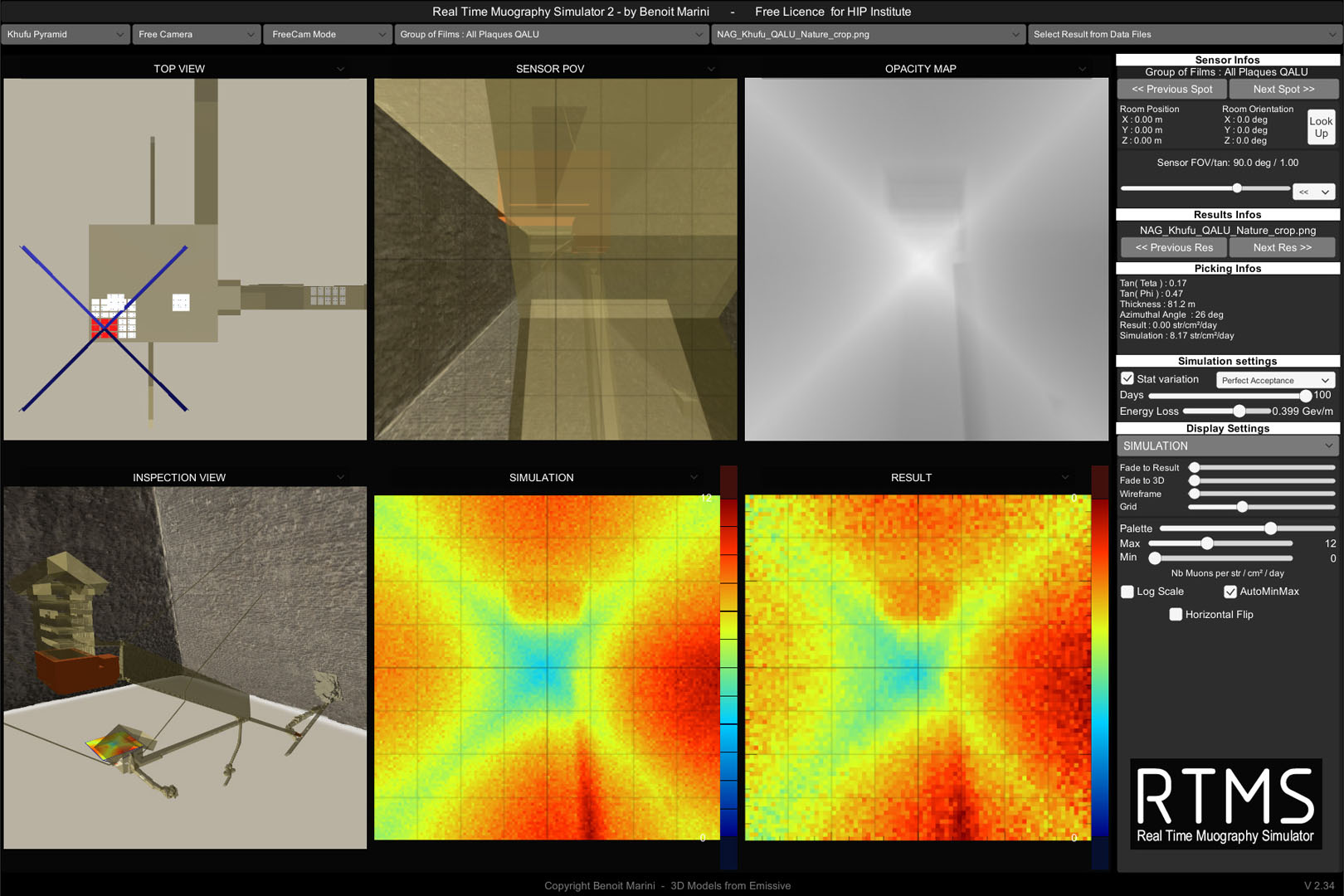“Real Time Muography Simulator for ScanPyramids mission Extended Abstract”
Conference:
Type(s):
Entry Number: 02
Title:
- Real Time Muography Simulator for ScanPyramids mission Extended Abstract
Presenter(s)/Author(s):
Abstract:
n October 2015, the ScanPyramids (SP)1 mission started looking for unknown structures inside Egyptian pyramids with non-invasive technologies. Possibly the most successful imaging technology was muography which is similar to X-ray radiography but with muons. Muons are naturally occurring weakly interacting elementary particles that travel freely through space, attenuated by dense matter. In 2017, ScanPyramids reported their findings of a large void in the pyramid of Khufu located above the grand gallery. The work, first published in the scientific journal Nature [Morishima et al. 2017], entailed the collaboration of three scientific teams using three separate muography techniques. Sensors from each team acquired muons detection data over several months inside and outside the pyramid before analysis revealed the above-mentioned large void. Interpretation of muography analysis results can be ambiguous. It is therefore common practice to assist the interpretation with a numerical simulation of the muons interaction with matter inside the expected object-of-interest. For this purpose, muography experts traditionally rely on GEANT4 [Agostinelli et al. 2003], a Monte-Carlo simulator. This simulator is verified to be accurate; It is however not capable of delivering live simulations due to computational complexity nor optimized for handling complex 3D geometry.
In response to this limitation, the author has designed and developed a Real-Time Muography Simulator (RTMS) for the purpose of the ScanPyramids mission. Thanks to leveraging already existing 3D rendering engines, the new bespoke simulator presents significantly reduced computational loads, hence enabling live simulation on a conventional laptop. Live simulation in RTMS permits to: understand raw detector outputs in context, assist the analysis of results, make live interactive hypothesis during meetings and facilitate the process of deciding optimal detector positioning.
In this talk, the author will present muography results, deliver the basic of muons physics with a parallel approach to photons, explain how classical 3D render engines inspired RTMS design and describe the simulator approach.
References:
S. Agostinelli et al. 2003. Geant4–a simulation toolkit. Nuclear Instruments and Methods in Physics Research Section A: Accelerators, Spectrometers, Detectors and Associated Equipment 506, 3 (2003), 250–303. https://doi.org/10.1016/S0168-9002(03)01368-8
S. Miyake. 1973. Rapporteur paper on muons and neutrinos. Technical Report. United States. CONF-730804–P5.
Kunihiro Morishima et al. 2017. Discovery of a big void in Khufu’s Pyramid by observation of cosmic-ray muons. Nature 552 (02 Nov 2017), 386 EP –. http: //dx.doi.org/10.1038/nature24647





